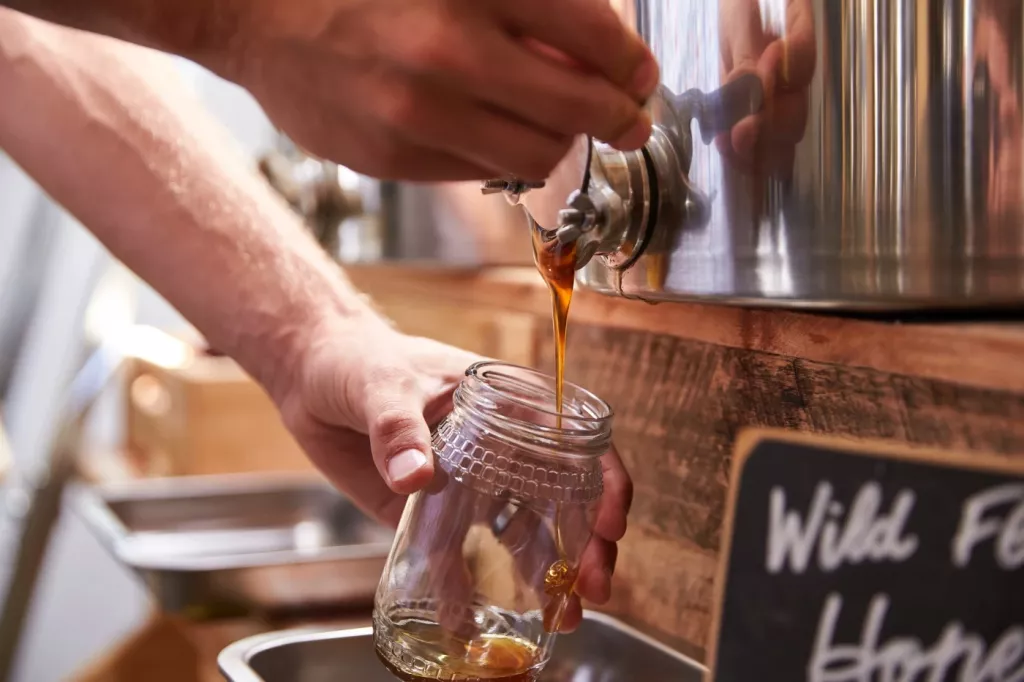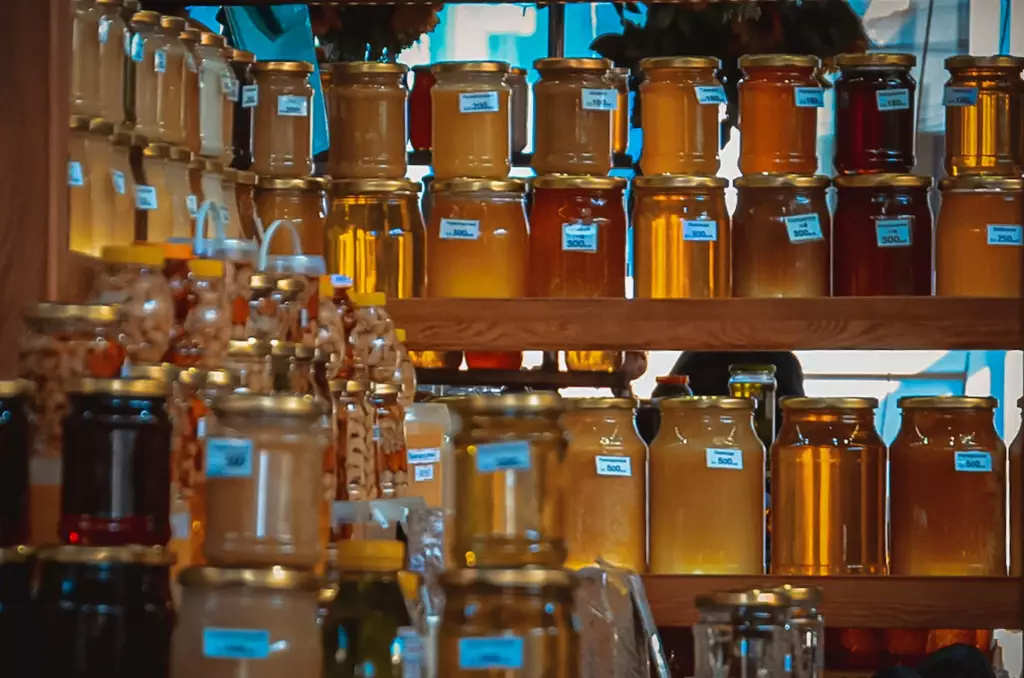Where To Sell Honey in Bulk? (7 Surprising Places)
Selling honey can be challenging if you don't know the people and businesses that usually buy them in bulk. Hence, you need to know what establishments in your area will likely buy honey and develop excellent relations with them.
In this article, we have listed seven places where you can market your honey without sacrificing profit.
You can sell honey in local grocery stores, farmers' markets, restaurants, and online marketplaces like Amazon. Local brewing facilities, festivals, and roadside stands are excellent places to sell honey in bulk. Some areas also have community-supported agriculture (CSA) programs that accept honey products.
Selling honey in bulk is also relatively easy once you have learned the ropes and developed your network of buyers.
Furthermore, you can later make honey-based products such as honey butter, sauces, candles, and candies.
Summary
- Online market platforms, farmers' markets, local grocery stores, and restaurants are some of the places where you can sell honey in bulk
- Selling honey in bulk has several pros and cons that can affect your bottom line
- You can use several strategies for selling honey in large volumes and ensure a constant demand for your product

On this page:
7 Best Places to Sell Honey in Bulk
If you are a local bee producer, here are several places where you can peddle your honey:
1. Farmers' markets
Many honey producers successfully sell their honey directly to consumers at local farmers' markets. Not only is this a great way to connect with your local community and build relationships with customers, but it also allows you to control the pricing of your honey.
Plus, the farmers market allows you to sell the unique varietals of your honey, explaining the story and process of making it, which adds value to the product.
2. Online market places
Use platforms like Amazon, Etsy, and eBay to reach a broad audience. Many honey producers find success selling their honey through these channels, and you can find inspiration in how they operate.
The advantage of these marketplaces is that you can reach out to customers worldwide, not just your local community. These platforms enable you to scale your business in ways that might not be possible with a farmers' market or local grocery store.
3. Local grocery stores
Many grocery stores always look for local products to stock on their shelves, and honey is a popular choice.
By working with a local store, you can build a relationship with the store managers and help them understand your honey's unique qualities. And with locally sourced products gaining popularity among consumers, your honey can have a competitive edge.
4. Restaurants and other food establishments
Many chefs use honey in their cooking and would like to source it locally. By connecting with local restaurants and food establishments, you can provide them with high-quality, locally sourced ingredients while expanding your customer base.

5. Festivals and food events
Several food events always look for vendors to sell food and drink products. Not only is this a great way to sell large quantities of honey at once, but it also allows you to connect with customers who may have yet to have the opportunity to try your honey.
Moreover, honey is gaining popularity as a gift from people visiting bee farms and tourist spots. Hence, you can sell them in souvenir shops and other similar establishments.
6. Skin care manufacturers
Skin care manufacturers use honey in their soaps, lotions, balms, and hair care products because of their natural antibacterial and moisturizing properties. Working with them can be a great way to expand your customer base and increase sales.
7. Bakeries and pastry shops
Bakeries and pastry shops are a natural fit for honey producers, as honey is often used as a sweetener in baking and pastry. By building relationships with local bakeries and pastry shops, you can provide them with a high-quality, locally sourced ingredient that can be used in their products.

Pros and Cons of Selling Honey in Bulk
Like other products, you can sell honey in small quantities or bulk. Most beekeepers aim to sell honey in large amounts since they can earn money much faster.
Offering convenience for bulk buyers through delivery services and unique packaging options can also increase sales. Creating a unique selling point for your honey and promoting it through partnerships and word of mouth can also effectively promote your product.
Below are the advantages and disadvantages of selling honey in bulk that you should consider before executing this sales and distribution model:
Pros
- You can clear out your inventory faster than selling it in small quantities.
- It's a faster way of getting your investment back plus profit from beekeeping.
- You won't have to store the honey for long in your home or farm.
- Selling honey in bulk can generate less waste in terms of packaging materials.
- Retailers and producers may make a larger profit by selling honey in bulk, as packaging and labor costs are spread out over larger quantities.
Cons
- You'll have to put a lower profit margin since the reseller also has to put their markup.
- It requires a readily available stock of honey to constantly supply your buyers.
- Large containers of honey can be difficult to transport, which may make it more challenging for some producers.

Strategies for Selling Honey in Large Volumes
The beekeeping industry can be a great source of income for many American families.
According to the United States Department of Agriculture (USDA), the country has over 2.71 million bee colonies that produced 1.48 million pounds (lbs) of raw honey in 2021. Meanwhile, National Honey Board estimates that each American consumes about 1.5 lbs of honey.
Here are a few strategies you can use to ensure you can get local businesses and trade groups to buy your honey:
-
Develop a unique selling point for your honey, such as its flavor profile, source location, or certifications, and use this to differentiate your product from others.
-
Identify specific market segments particularly interested in bulk honey, such as commercial bakers, large-scale food manufacturers, and honey producers. Develop marketing strategies to reach these groups.
-
Visit various local health food stores and grocery shops and find out if they have a honey section. Give the owner or store manager of the store a free sample of your product to convince them to put your honey in their store.
-
Always have a product sheet with you when visiting these establishments. A product sheet gives customers various information about the items you sell. Make sure to include the honey jar sizes, prices, pictures of the products, and your contact details.
-
Offer delivery service and packaging options that suit the bulk buyers' needs. Make sure it's easy for customers to order and receive large quantities of honey.
-
Attend trade shows and networking events to connect with potential buyers and get your honey in front of a larger audience.
-
Offer different packaging options to your customers. Some bulk buyers prefer 5-gallon pails, while others prefer totes or even drums. Offering different packaging options to suit the needs of different customers could help you make more sales.
-
Develop a solid online presence. Create a website, social media, and online marketplaces to reach a wider audience and make it easy for customers to purchase your honey in bulk.

Conclusion
Many options exist for selling honey in bulk, including online marketplaces, wholesale buyers, and trade shows. Building a strong online presence and developing relationships with wholesale buyers can help increase the reach of your product.
Finally, it's crucial to focus not only on quantity but also on the quality and authenticity of your honey while complying with all the regulations and standards.